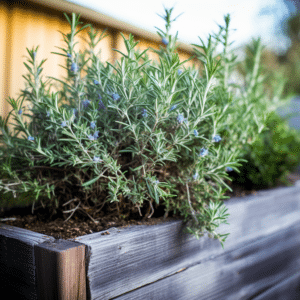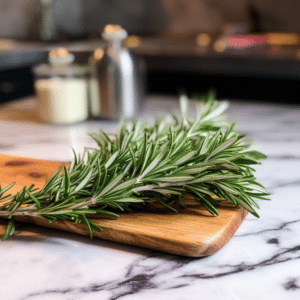Known for its fragrant aroma and culinary uses, rosemary is a popular herb among gardeners and chefs alike. This perennial evergreen shrub, native to the Mediterranean, is not only easy to grow but also offers numerous health benefits. In this guide, we will delve into the various aspects of growing rosemary, from planting and care to harvesting and usage.
The Basics of Growing Rosemary

Before we delve into the specifics, let’s first understand the basics of growing rosemary. This herb thrives in well-drained soil, full sunlight, and prefers a slightly alkaline pH. It is a hardy plant that can withstand drought and frost, making it suitable for various climates.
While rosemary can be grown from seeds, it is often easier and quicker to propagate from cuttings. This method ensures that the new plants carry the same characteristics as the parent plant, including its flavor and aroma.
Choosing the Right Variety
There are several varieties of rosemary, each with its unique characteristics. Some varieties are ideal for culinary uses, while others are best suited for ornamental purposes. For example, the ‘Tuscan Blue’ variety is known for its strong flavor and is often used in cooking. On the other hand, the ‘Prostratus’ variety, with its trailing growth habit, is perfect for hanging baskets or as a ground cover.
When choosing a variety, consider your specific needs and the growing conditions in your area. Some varieties are more tolerant to cold and humidity than others. Therefore, it is crucial to choose a variety that is well-suited to your local climate and soil conditions.
Planting and Caring for Rosemary

Once you have chosen the right variety, the next step is planting. Rosemary can be planted in the ground or in containers, making it a versatile option for both gardeners with ample space and those with limited areas.
When planting rosemary, ensure that the soil is well-drained and enriched with organic matter. The plant prefers a sunny location, so choose a spot that receives at least six hours of sunlight each day. If you are planting in a container, make sure it has adequate drainage holes to prevent waterlogging.
Watering and Fertilizing
Rosemary is a drought-tolerant plant, so it requires less watering than many other herbs. However, it is essential to keep the soil slightly moist, especially during the growing season. Overwatering can lead to root rot, a common problem with rosemary.
As for fertilizing, rosemary does not require much. A slow-release fertilizer applied in the spring should suffice for the entire growing season. If you notice the leaves turning yellow, it may indicate a lack of iron, which can be corrected with a foliar spray of chelated iron.
Harvesting and Using Rosemary

Harvesting rosemary is a straightforward process. Simply cut off the top 2-3 inches of each sprig, leaving the plant well pruned. Regular harvesting encourages the plant to bush out and produce more foliage.
Rosemary can be used fresh or dried. To dry rosemary, hang the sprigs in a warm, dry, and well-ventilated area until the leaves are completely dry. Once dried, they can be stored in an airtight container for future use.
Culinary Uses
Rosemary is a versatile herb that can be used in a variety of dishes. It pairs well with meats, especially lamb and chicken, and is a common ingredient in Mediterranean cuisine. It can also be used to flavor bread, soups, and sauces.
Besides its culinary uses, rosemary is also known for its medicinal properties. It is rich in antioxidants and anti-inflammatory compounds, which can help boost the immune system and improve digestion. It is also believed to improve memory and concentration.
Common Problems and Solutions
While rosemary is a relatively easy plant to grow, it can be susceptible to certain pests and diseases. The most common problems include root rot, powdery mildew, and aphids.
Root rot is often a result of overwatering or poor drainage. To prevent this, ensure that the soil is well-drained and avoid overwatering. Powdery mildew, a fungal disease, can be prevented by ensuring good air circulation around the plant. If your plant is affected, remove the infected parts and apply a fungicide.
Dealing with Pests
Aphids are small insects that can cause damage by sucking the sap from the plant. They can be controlled by spraying the plant with a mixture of water and mild soap. For severe infestations, a stronger insecticide may be required.
In conclusion, growing rosemary is a rewarding endeavor that offers numerous benefits. With the right care and attention, you can enjoy a bountiful harvest of this aromatic and flavorful herb.